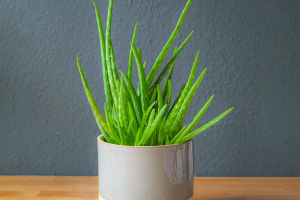The language of flowers, or floriography, has been a form of communication for centuries.
Among the myriad blooms that convey messages, the lily of the valley stands out for its delicate beauty and profound symbolism.
This small, fragrant flower, with its dainty white bells and lush green leaves, has woven its way into various cultural and historical narratives, embodying a language of purity, humility, and renewal.
Historical Significance
The lily of the valley, scientifically known as "Convallaria majalis", has a storied past. Its origins trace back to Europe and Asia, where it has been celebrated in folklore and tradition. In the Victorian era, when the language of flowers was at its peak, the lily of the valley symbolized a return to happiness. It was often included in bouquets to convey best wishes and a sense of joy.
In cultural tradition, the lily of the valley is associated with the Virgin Mary, often referred to as “The Lady’s Tears.” According to legend, the tears Mary shed at the crucifixion turned into these beautiful flowers. This association has cemented the lily of the valley’s place in sacred iconography as a symbol of purity and humility.
Symbolism and Meaning
The lily of the valley carries a variety of meanings depending on the cultural context. In general, it is seen as a symbol of purity, chastity, and humility. The flower’s simple yet elegant appearance represents modesty, while its fresh, sweet fragrance suggests a sense of rejuvenation and renewal.
In the language of flowers, gifting a bouquet of lily of the valley conveys a message of happiness and well-being. It is often given to express the hope for a joyful future and is commonly used in bridal arrangements to signify the purity and sweetness of the bride. The flower also marks new beginnings, making it a popular choice for celebrations of birth and new ventures.
Literary and Cultural References
The lily of the valley has found its way into numerous literary works and cultural expressions. In literature, it is often used to evoke innocence and delicate beauty. For instance, in John Galsworthy’s “The Forsyte Saga”, the character Irene is frequently associated with lily of the valley, emphasizing her pure and gentle nature.
In addition to literature, the flower is a recurring motif in visual arts and design. Its elegant form and timeless beauty have inspired artists to capture its essence in paintings, illustrations, and even jewelry. The lily of the valley’s delicate bells and lush green leaves have made it a favorite subject for botanical illustrations, highlighting its aesthetic appeal and symbolic richness.
Modern Usage and Popularity
Today, the lily of the valley continues to be a popular flower in gardens, floral arrangements, and perfumery. Its charming appearance and delightful scent make it a beloved choice for various occasions. Gardeners cherish the plant for its ability to thrive in shady areas, providing a splash of beauty in less sunny spots.
In the world of perfumery, the lily of the valley’s fragrance is highly prized. Its fresh, sweet scent is often used in high-end perfumes and scented products, capturing the essence of spring and renewal. The flower’s popularity in this industry underscores its enduring appeal and the timeless nature of its beauty and symbolism.
The language of the lily of the valley is a testament to the enduring power of floral symbolism. This delicate flower, with its rich history and multifaceted meanings, continues to captivate and inspire. Whether in literature, art, or everyday life, the lily of the valley speaks a language of purity, happiness, and renewal. Its simple yet profound beauty reminds us of the timeless messages that flowers can convey, connecting us to nature and the deeper currents of human emotion and tradition.


